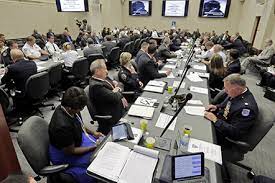Preparedness is the process of developing the knowledge and capabilities to prevent, respond to, and recover from natural disasters, acts of terrorism, pandemics, and other emergencies. It requires the participation of individuals, families, communities, and businesses. Engage Communities in Disaster Preparedness?
Engaging communities in preparedness efforts is vital for several reasons. Some of these include:

Empowering Individuals
Individuals, families, local businesses, community groups, nonprofit organizations, schools and academia and media outlets must participate in preparedness efforts. Having everyone involved in the process fosters innovation and enhances the effectiveness and efficiency of the strategy.
Empowerment can take many forms: Economic empowerment focuses on improving financial independence and asset building; political empowerment aims to promote civic engagement, advocacy and political representation. Community empowerment centers on addressing environmental issues by promoting sustainable practices and encouraging participation in conservation efforts. It also includes enhancing access to education and health care.
Enhancing Community Cohesion
Involving community stakeholders in disaster planning enables real-time feedback and adjustment to be made. This is especially useful when dealing with cultural or logistical issues that may not have been considered initially.
Unlike the development of multiculturalism, community cohesion was built around a positive vision for diverse societies and used contact and interaction to break down barriers. This approach was deemed more effective than simply trying to ignore problems or avoiding debate.
Local community members have a unique understanding of the risks and hazards that could impact their area, as well as the skills and resources available to mitigate them. Their involvement increases the resilience of their communities and reduces the need to rely on outside assistance during an emergency.
Building Resilience
Resilience is an important component in disaster preparedness. Having resilience is more than just having a strong will; it also requires the support of others. Community involvement is a powerful way to build community resilience.
Community members can receive training in first aid, search and rescue operations, and basic disaster management. This enables them to provide immediate aid and relief efforts. It also prevents communities from becoming dependent on outside agencies, thereby reducing the risk of loss of life and property.
Moreover, community engagement fosters open communication and cooperation between stakeholders. This helps reduce misunderstandings and ensures that disaster preparedness plans are effective and consistent with local needs.
Enhancing Communication and Cooperation
Communities play an essential role in disaster preparedness. They develop emergency plans, stockpile supplies and build evacuation routes, which reduce the impact of disasters on their lives.
Community engagement also improves coordination between local organizations, authorities and government bodies. This helps avoid duplicated efforts and ensures everyone is on the same page in case of a crisis.
Moreover, community engagement provides real-time feedback and allows for addressing cultural nuances that might not have been considered during the planning process. This makes preparedness strategies more effective and sustainable in the long run.
Fostering Trust
Community members who participate in disaster preparedness activities often have deep-rooted knowledge of their local area.
This ensures that strategies are relevant and responsive to local needs, thereby enhancing their overall effectiveness.
Moreover, by participating in preparedness efforts, communities become more self-reliant and less dependent on external assistance during a crisis. This reduces the time required to respond and facilitates quicker recovery.
Embracing Cultural Sensitivity
Communities that are engaged in preparedness efforts often unite and become stronger through activities like training sessions and drills.
Additionally, the culture of the community can foster innovative ideas for preparedness.
Long-term Sustainability
Community involvement in preparedness efforts is a crucial part of building resilience and improving disaster response. It fosters community cohesion, helps people understand and accept disaster risks, enhances communication and cooperation, ensures inclusivity, and promotes self-reliance.
This ensures that efforts are streamlined and effective, reducing effort duplication and ensuring efficient recovery operations.
Businesses that are committed to sustainable development and community involvement should incorporate sustainability into the strategic planning process. This will allow them to meet customer demand for sustainable products, increase operational efficiencies, and create competitive advantages needs read more hear.





















